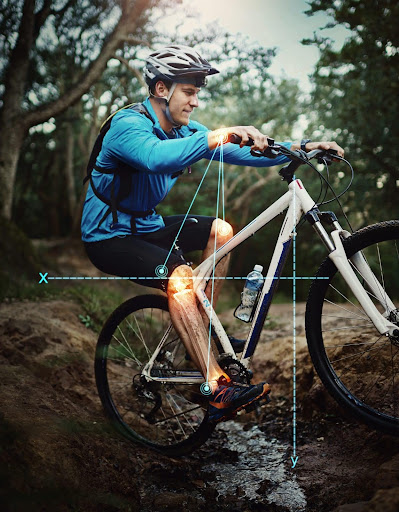Cycling is not just a mode of transportation or a form of exercise; it’s a marvel of engineering and physics. Understanding the science behind cycling and bicycle mechanics can enhance our appreciation of this activity and help us improve our cycling experience. Here, we delve into the principles that make cycling efficient and the mechanics that keep our bicycles running smoothly.
The Physics of Cycling
At the heart of cycling lies the interplay between force, motion, and balance. When a cyclist pedals, they apply a force that propels the bicycle forward. This forward motion is a result of converting the downward force from the pedals into a rotational force on the wheels. The mechanical advantage provided by the gears allows cyclists to adjust the force required to pedal, making it easier to climb hills or accelerate on flat terrain.
One of the key aspects of cycling is balance. As a bicycle moves forward, gyroscopic forces from the rotating wheels help to stabilise it. Additionally, the rider’s ability to shift their weight and steer the handlebars contributes to maintaining balance. The faster the bicycle moves, the more stable it becomes, which is why it’s easier to balance at higher speeds.
Aerodynamics and Efficiency
Aerodynamics plays a crucial role in cycling efficiency. The shape of the bicycle and the posture of the rider can significantly impact air resistance. Streamlined designs and aerodynamic riding positions reduce drag, allowing cyclists to maintain higher speeds with less effort. This is because air resistance is one of the primary forces that cyclists must overcome, especially at higher speeds.
Even small changes, such as tucking in elbows or wearing tighter clothing, can make a noticeable difference in performance. For instance, professional cyclists often spend considerable time in wind tunnels, testing various positions and gear to optimise their aerodynamics. Additionally, the use of specialised equipment such as aero helmets, skin suits, and deep-section wheels further enhances aerodynamic efficiency.
Bicycle Mechanics
The mechanics of a bicycle are designed to optimise efficiency and durability. Key components include the frame, wheels, gears, brakes, and chain. Each part contributes to the overall performance and requires regular maintenance to function correctly.
Frame
The frame provides the structure of the bicycle. Materials like carbon fibre, aluminium, and steel are commonly used, each offering a different balance of strength, weight, and flexibility.
Wheels
Wheels are crucial for movement and stability. The tension in the spokes, the quality of the tyres, and the alignment of the wheels all affect the ride quality.
Gears
Gears allow cyclists to adjust the resistance and cadence. Properly maintained gears ensure smooth transitions and efficient pedalling.
Brakes
Brakes are essential for safety. Regularly checking brake pads, cables, and discs ensures reliable stopping power.
Chain
The chain transfers power from the pedals to the wheels. Keeping the chain clean and lubricated reduces wear and improves efficiency.
Conclusion
Understanding the science behind cycling and the mechanics of bicycles can lead to a more enjoyable and efficient riding experience. Whether you’re a casual rider or a competitive cyclist, appreciating these principles can help you make informed decisions about maintenance, equipment, and riding techniques. So next time you hop on your bike, remember the intricate dance of physics and mechanics that makes it all possible.
Written by Niall O’Riordan UBS
